In this exclusive interview for the Boundless blog, John Riordan, Director of Support, Ireland at Shopify shares what he has learned about succeeding as a remote company, what keeps a remote workforce happy and engaged, and how to scale it.

When Tammy Bjelland, Founder and CEO of Workplaceless, and I first exchange emails in late February about the topic that we should concentrate on for this article, we agree on the theme of alignment in hybrid teams. Workplaceless, which she founded in 2017, has been focusing on this topic of late given that they know just how much effort it takes to make co-located and remote employees work effectively together. Having spent the majority of the past seven years in hybrid teams, experiencing work on both sides, I have had my fair share of alignment struggles.
By the time we get on a call mid-March, there is no such thing as hybrid teams for the foreseeable future, instead everyone is working remotely due to COVID-19. Making sure remote team members are aligned has become even more of a challenge for many suddenly remote leaders and employees.
"Misalignment is one of the biggest sources of conflict for companies remote or not." Without proper training or adjustment to how to work and communicate remotely, it's a recipe for an alignment disaster. Tammy is adamant that misalignment incidents will happen in the current situation. "It's only a matter of when it happens."
Making sure remote teams are on the same page is something she both preaches and practices. Workplaceless has been fully distributed since founding, and Tammy makes sure that the 10 people on her team - spread between 9 locations - are aligned every single day. The core of the business is in training leaders and teams on how to do all aspects of remote correctly. Tammy started Workplaceless because she was frustrated at the lack of professional development resources that could help her navigate and grow in her remote career.
In this exclusive interview for the Boundless blog, we talk with Tammy about how to avoid misalignment, how to intervene if it occurs, and how to build remote team alignment in the foundation of every sudden or seasoned remote company.
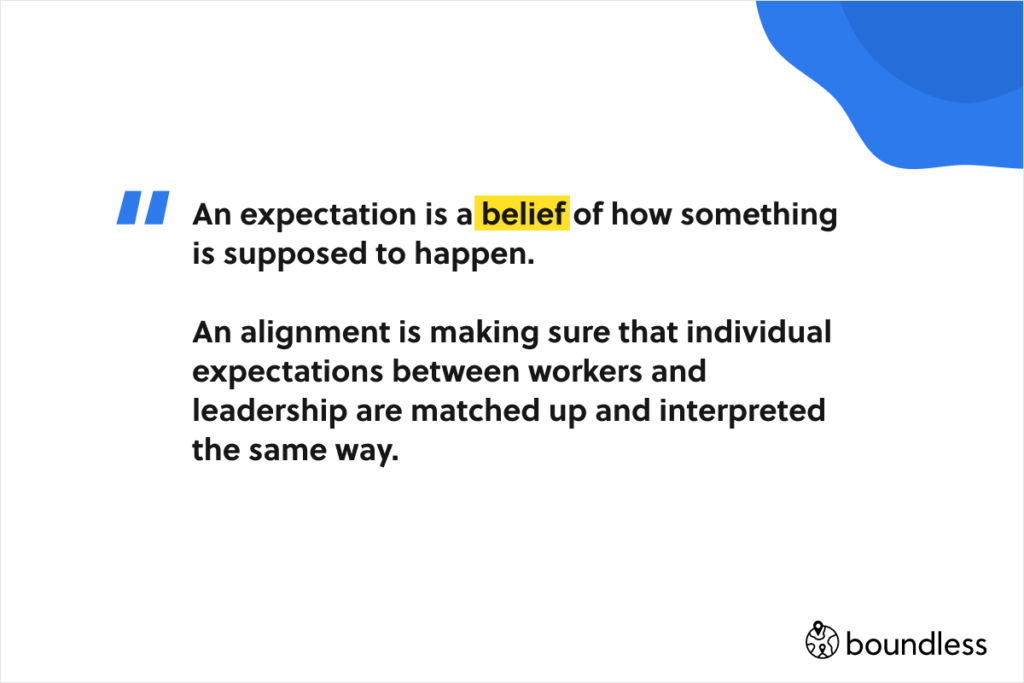
For any company to run smoothly, alignment needs to be in place for all aspects of how it and its employees operate. When a company is remote, clear guidelines on that become even more essential. Without explicit directions, all facets of work are dependent on individual interpretations, which will inevitably differ between people. That's when conflict is born: a manager expects one thing but receives something else.
What's unfortunate is that not meeting expectations isn't necessarily anyone's fault, and it doesn't happen because someone didn't do their job. The reason is that the expectations weren't clear since they were never communicated or agreed upon.
"An expectation is a belief of how something is supposed to happen, and alignment is making sure that individual expectations between workers and leadership are matched up and interpreted the same way."
Tammy is no stranger to making assumptions instead of communicating expectations and aligning on them. She had assumed that all remote workers approached problems in a similar way to her. "When I started managing others, that assumption caused me problems."
What she had assumed was that everyone who works remotely deals with blockages the way that she did - by proactively doing anything possible to resolve them. She realised that most people would, in fact, stop when they are blocked and only when asked why they missed the deadline acknowledge that something had blocked them. It caused her a lot of frustration.
"I was operating from a place of my expectations, while we had never agreed that when someone is blocked, they proactively try to find a solution or raise it with me as soon as it happens." Through her work in Workplaceless, Tammy knows just how prevalent it is to have different styles of approaching a blockage.
She warns about the many consequences that can happen due to a lack of alignment. For starters, general productivity and quality of output are at risk. Beyond that, the price companies may pay for misalignment are delayed projects, budget overheads, having to add additional resources and a lot of frustration between people. It turns out few things erode trust more than not meeting someone's expectations.
Tammy learned that for future projects, she had to set much clearer expectations and align from the beginning. For proper alignment to exist, an expectation has to be communicated and set, agreed upon by everybody, and put down in writing. It's when any of those general steps are omitted or not appropriately executed that conflict can quickly arise.
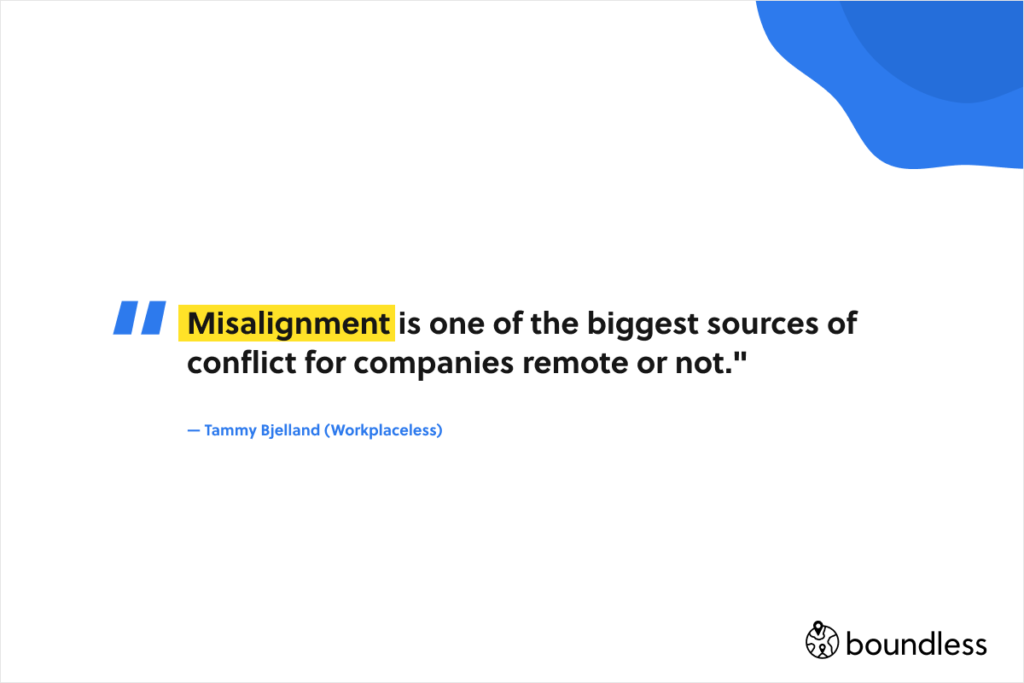
Alignment guidelines should cover anything from when people are expected to be online, and how often they should respond, through to how progress will be tracked and updated, all the way to whether meetings are mandatory or not, and many others.
Nowadays, Tammy implements a clear framework for coming up to alignment on any subject.
The process for reaching alignment
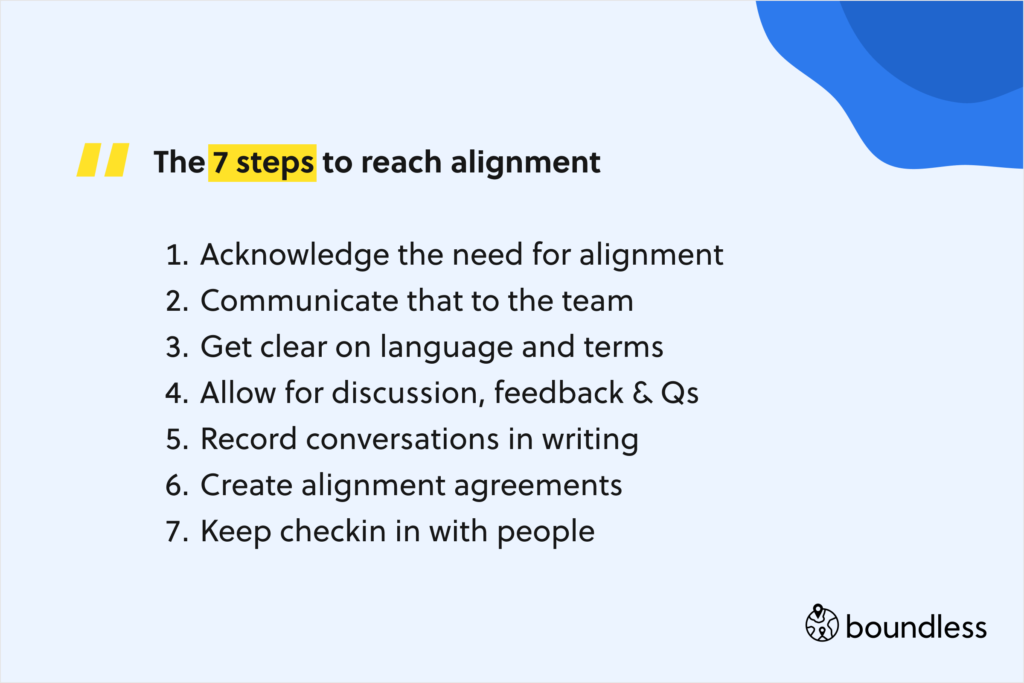
The key to alignment in the long term is proper documentation. Everything that is discussed and agreed on in terms of alignment needs to be adequately documented so that team members can refer to it at any point. I ask Tammy what's the right balance in terms of having enough documentation but also not too much. Here is what she advocates for:
While projects are a conspicuous place where alignment is essential, Tammy advises companies spend time creating guidelines for the following aspects of the business:
This will most probably be covered in the Communications Charter, and it's imperative. Without clarity a lot of miscommunication can happen. "I've been in situations where projects were stalled because we were not getting proactive communication from a team member. This is referred to as ghosting. It had happened because there were no clear expectations set about the cadence of communication. People would take their time in responding, and there was little we could do about it because we hadn't set the expectation."
Alongside responsiveness, Tammy also mentions how important it is to agree on engagement during synchronous meetings. Be clear that people need to have their cameras on and participate in the discussion.
Beyond aligning on a day to day projects, another vital side of the business where misalignment can cause problems is company culture. There is a significant danger of this happening right now with people adjusting from being in the same office and having their little rituals and ways of being isolated at home. "People have developed all of their rituals and signals of culture in a co-located context, and they haven't taken the time to understand how that shows up for their remote team members, and how the culture looks for them." How the company works, what its values and identity are, how people show up to work are all parts of culture that you cannot afford to be implicit about. Instead, it has to be recorded based on discussions with everyone in the organisation.
For the proper functioning of a remote organisation, it's important that different teams align on their activities. Whether that is aligning on hiring needs so the recruitment teams know what talent they are looking for or what sales communicates to potential leads in terms of functionality and capability, many internal and external problems can be caused by lack of alignment. Instigate the need for constant alignment between teams and encourage that teams touch base occasionally.
Given the current situation, working remotely from home requires a slightly different approach, including how alignment is reached. Workplaceless have created resources for emergency or unexpected remote work, which includes a checklist that provides the essential questions and topics that both employees and managers will need to have clarity about. If you haven't had conversations and agreements about any of the topics inside, we highly recommend that you go through them.
Just like every other aspect of the business and managing people, alignment needs to be approached with emotional intelligence and empathy on the part of leaders.
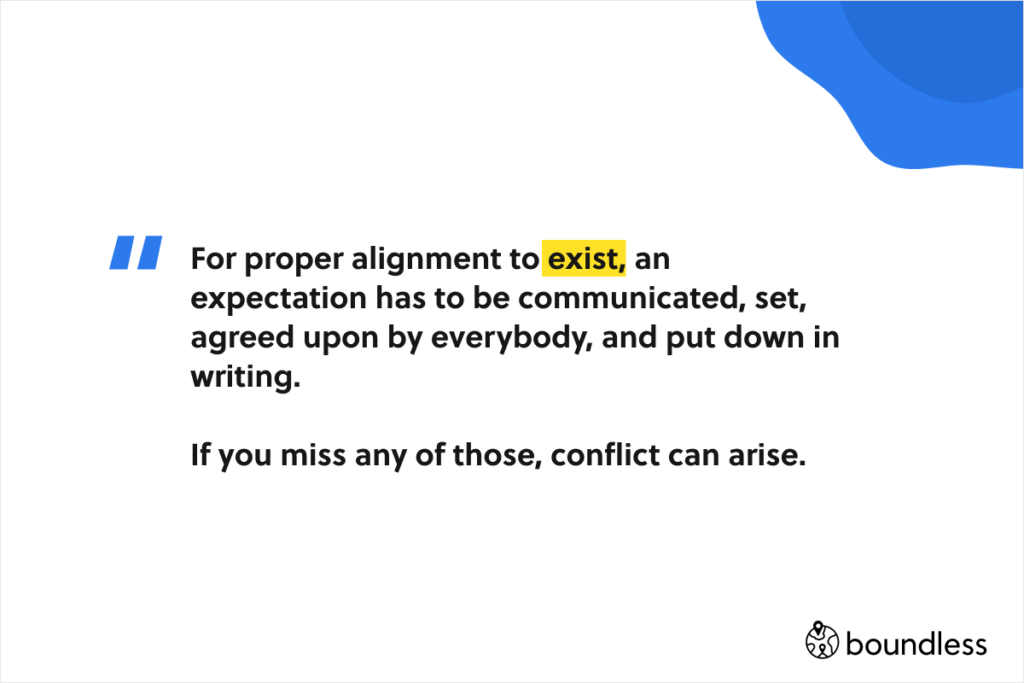
Be proactive
This means that leaders have to be even more proactive about checking in with people as well as letting them operate in their own time. They should connect and reach out, especially if they start seeing first signs of misalignment, disengagement or ghosting on the part of employees. "Everyone's lives have been upended. I don't think it's outside the realm of reasonableness to ask that everyone checks in on expectations every single day because every day is different than the day before."
Tammy's advice on being proactive is directed at everybody: leaders and team members alike. "It's more important than ever that we all chip in and support each other, and make individual connections."
Overcommunicate
Whether in a time of crisis or not, Tammy urges everyone to remember we're all human and have a lot of information coming at us every single day. As we have previously said on this blog, when it comes to working remotely, overcommunication is essential. No manager should assume that if employees are told once or twice something, they will remember it and do it every single time. Even if something seems obvious, it needs to be repeated.
Tammy gives an all too appropriate analogy for this. "We have known for a long time that we're supposed to wash our hands for at least 20 seconds, but it's only now that people are doing it. COVID-19 has given us the additional reinforcement and nudge to change our habits. Same goes with many other work-related "healthy" habits. It's on managers to overcommunicate why they are important."
Build an army of alignment heroes
For alignment to last and be sustained as a company scales, the culture for alignment needs to be transferred beyond founders and leaders of the company. It's important managers agree on the importance of alignment, and they champion it within their teams and proactively set it up. "Fostering alignment heroes should come alongside alignment."
When it comes to establishing good alignment practices, start by acknowledging the need for it, and understanding what the risks are to not creating it. Getting there will take a lot of conversations but there is no way of hacking this as the longevity of your business depends on it. Put in the necessary time and effort to have productive conversations, and you will come out on the other side with an aligned organisation ready to move in the same direction.
When it comes to global employment, very few hacks or shortcuts will ever work. The same goes for how you employ your distributed workers. Hiring them as independent contractors is one such hack that will not serve you in the long term. Boundless can help you employ your remote workforce legally and compliantly in Ireland, the UK, Denmark, Portugal, Australia, and more coming soon. Learn more.
The making available of information to you on this site by Boundless shall not create a legal, confidential or other relationship between you and Boundless and does not constitute the provision of legal, tax, commercial or other professional advice by Boundless. You acknowledge and agree that any information on this site has not been prepared with your specific circumstances in mind, may not be suitable for use in your business, and does not constitute advice intended for reliance. You assume all risk and liability that may result from any such reliance on the information and you should seek independent advice from a lawyer or tax professional in the relevant jurisdiction(s) before doing so.
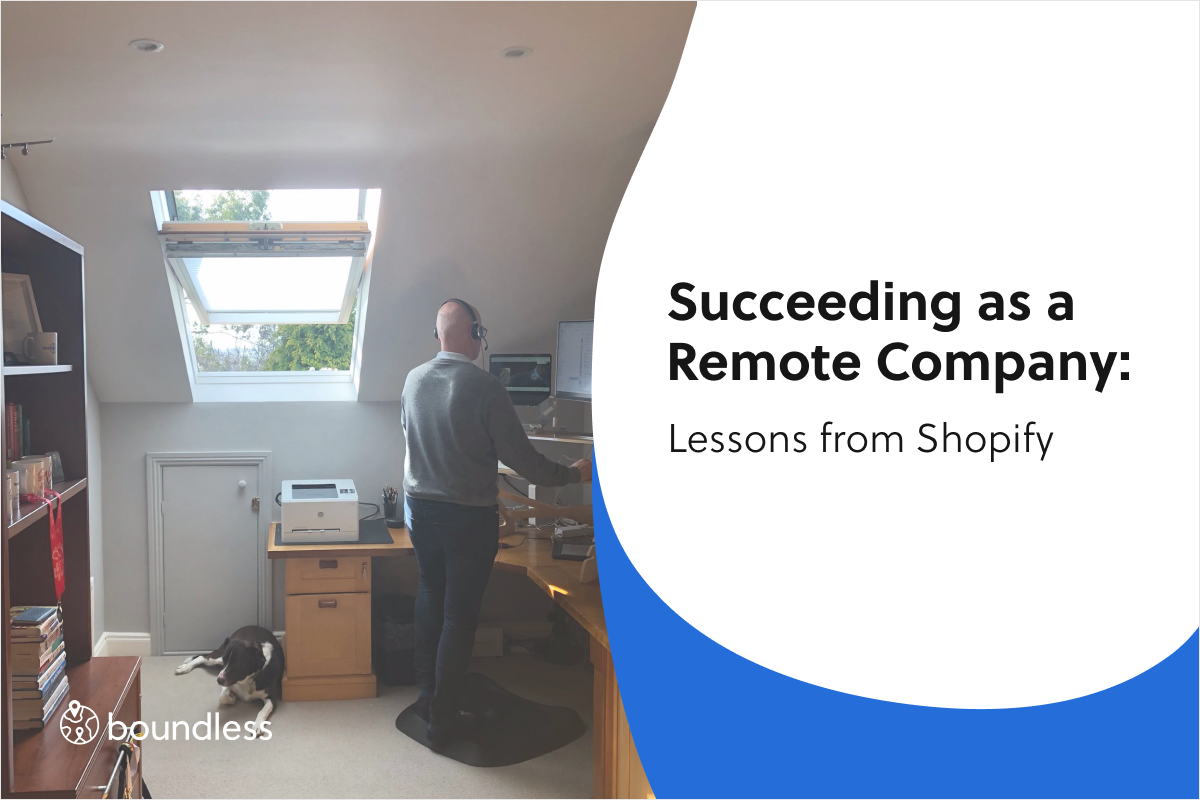
In this exclusive interview for the Boundless blog, John Riordan, Director of Support, Ireland at Shopify shares what he has learned about succeeding as a remote company, what keeps a remote workforce happy and engaged, and how to scale it.

If leaders do not make their companies fit for a world where a remote and distributed way of work is far more prevalent, they risk becoming less competitive employers. A change in how we operate is needed, which goes beyond opening up the recruitment pool and advertising remote-friendly jobs.
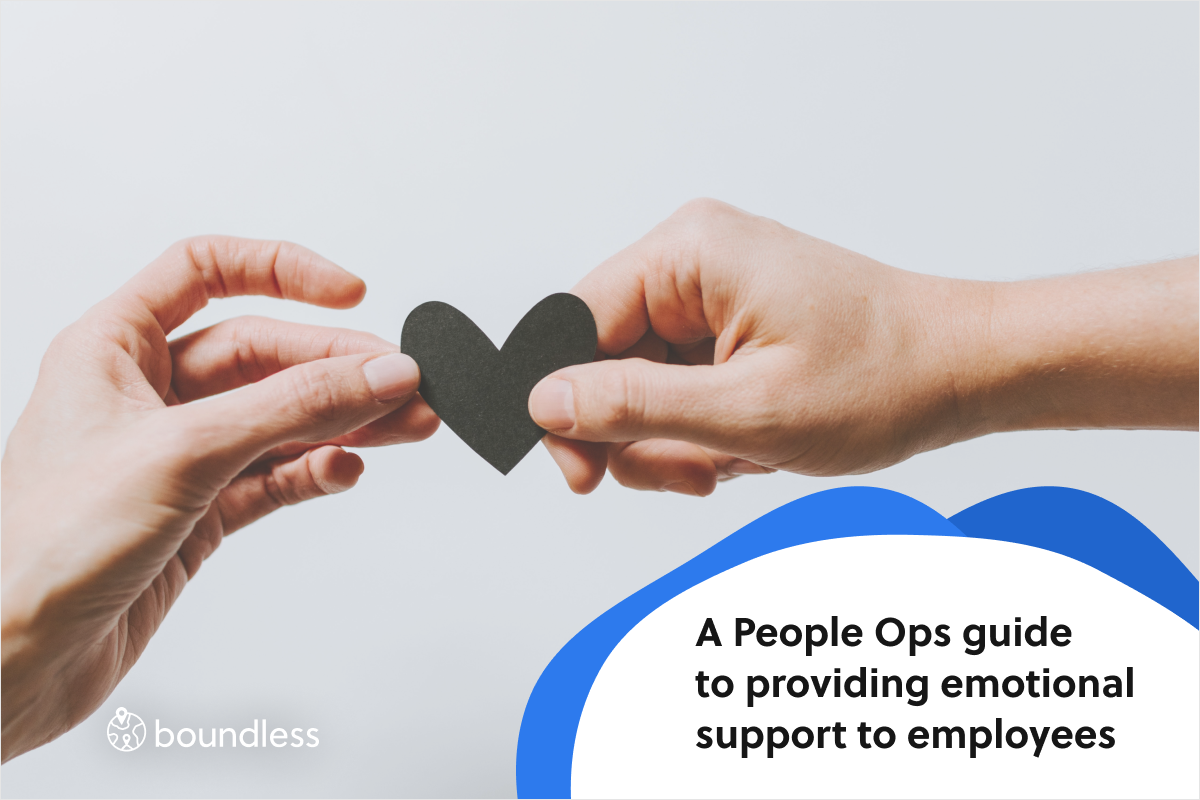
Nowadays, nothing is normal, which means that any work-life troubles are only a small puzzle of a very complex and challenging situation. In this unchartered territory, which none of us know how to navigate, we all need to support and be there for each other.

Running a global, remote-based organisation carries a raft of HR compliance challenges. But fear not! We’ve come up with a simple guide to help you meet these challenges head-on and establish yourself as a leading, people-first employer.

To employees, employment may seem relatively straightforward at the front end - sign a contract, get paid once a month, receive a payslip, take some time off when needed. Managing the back end is where the complexity begins.

Excellent communication is at the heart of making remote work, work. With the change from co-location to a remote setting, the goals that you have, the deliverables that you're trying to reach and follow through on are not changing. What mainly changes is how you communicate.